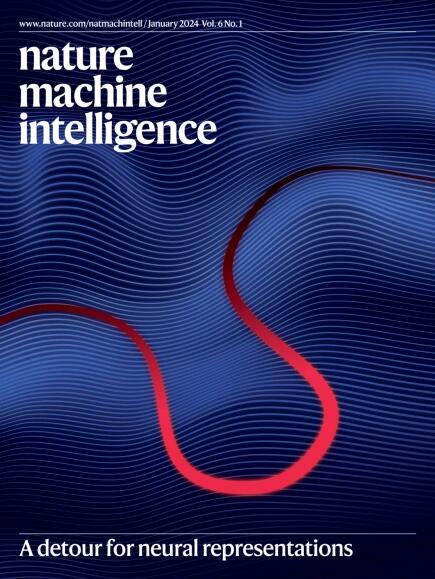Bridging chemistry and artificial intelligence by a reaction description language
IF 23.9
1区 计算机科学
Q1 COMPUTER SCIENCE, ARTIFICIAL INTELLIGENCE
引用次数: 0
Abstract
With the fast-paced development of artificial intelligence, large language models are increasingly used to tackle various scientific challenges. A critical step in this process is converting domain-specific data into a sequence of tokens for language modelling. In chemistry, molecules are often represented by molecular linear notations, and chemical reactions are depicted as sequence pairs of reactants and products. However, this approach does not capture atomic and bond changes during reactions. Here, we present ReactSeq, a reaction description language that defines molecular editing operations for step-by-step chemical transformation. Based on ReactSeq, language models for retrosynthesis prediction may consistently excel in all benchmark tests, and demonstrate promising emergent abilities in the human-in-the-loop and explainable artificial intelligence. Moreover, ReactSeq has allowed us to obtain universal and reliable representations of chemical reactions, which enable navigation of the reaction space and aid in the recommendation of experimental procedures and prediction of reaction yields. We foresee that ReactSeq can serve as a bridge to narrow the gap between chemistry and artificial intelligence. Xiong et al. introduce ReactSeq, a reaction description language that captures molecular editing operations in chemical reactions. It enables language models to excel in retrosynthesis prediction and reaction representation.


用反应描述语言架起化学与人工智能的桥梁
随着人工智能的快速发展,大型语言模型越来越多地用于解决各种科学挑战。此过程中的一个关键步骤是将特定于领域的数据转换为用于语言建模的标记序列。在化学中,分子通常用分子线性符号表示,化学反应用反应物和生成物的序列对来表示。然而,这种方法不能捕捉到反应过程中原子和键的变化。在这里,我们介绍ReactSeq,这是一种反应描述语言,用于定义逐步化学转化的分子编辑操作。基于ReactSeq,用于逆合成预测的语言模型可能在所有基准测试中始终表现出色,并在人在循环和可解释的人工智能中展示出有希望的突发能力。此外,ReactSeq使我们能够获得化学反应的通用和可靠的表示,从而可以导航反应空间,并有助于推荐实验程序和预测反应产率。我们预见ReactSeq可以成为缩小化学和人工智能之间差距的桥梁。
本文章由计算机程序翻译,如有差异,请以英文原文为准。
求助全文
约1分钟内获得全文
求助全文
来源期刊

Nature Machine Intelligence
Multiple-
CiteScore
36.90
自引率
2.10%
发文量
127
期刊介绍:
Nature Machine Intelligence is a distinguished publication that presents original research and reviews on various topics in machine learning, robotics, and AI. Our focus extends beyond these fields, exploring their profound impact on other scientific disciplines, as well as societal and industrial aspects. We recognize limitless possibilities wherein machine intelligence can augment human capabilities and knowledge in domains like scientific exploration, healthcare, medical diagnostics, and the creation of safe and sustainable cities, transportation, and agriculture. Simultaneously, we acknowledge the emergence of ethical, social, and legal concerns due to the rapid pace of advancements.
To foster interdisciplinary discussions on these far-reaching implications, Nature Machine Intelligence serves as a platform for dialogue facilitated through Comments, News Features, News & Views articles, and Correspondence. Our goal is to encourage a comprehensive examination of these subjects.
Similar to all Nature-branded journals, Nature Machine Intelligence operates under the guidance of a team of skilled editors. We adhere to a fair and rigorous peer-review process, ensuring high standards of copy-editing and production, swift publication, and editorial independence.
 求助内容:
求助内容: 应助结果提醒方式:
应助结果提醒方式:


